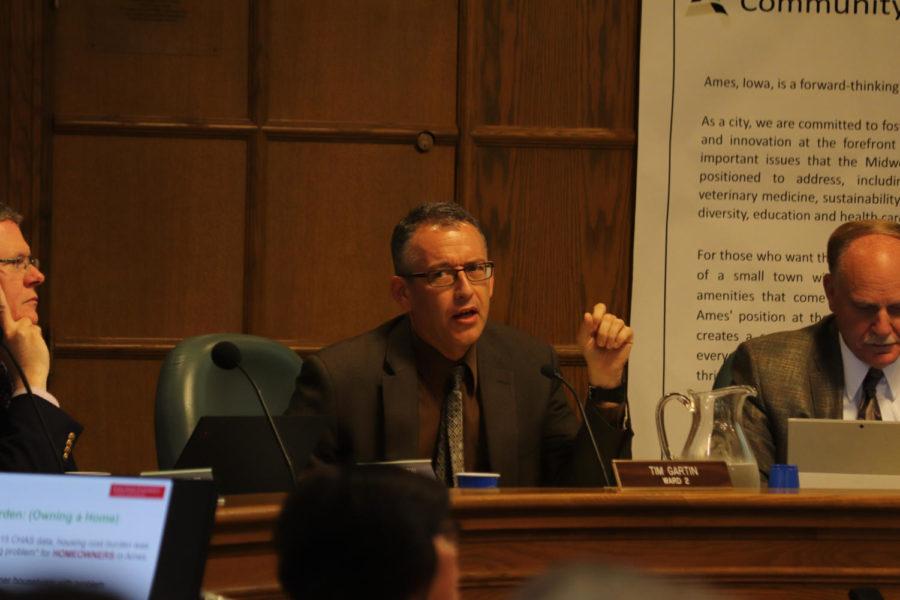- News
- News / Politics And Administration
- News / Politics And Administration / Campus
- News / Politics And Administration / City
- News / Student Life
Fair housing study reveals severe housing cost burdens, council hears public input on rental housing code
Grant Tetmeyer/Iowa State Daily
Second Ward Representative Tim Gartin at an Ames City Council meeting on June 18. The city council listened to public input on how to maintain the character of certain neighborhoods in the wake of the repeal of the rental cap.
June 18, 2019
Ambiguity hangs in the air as the Ames City Council works to balance its goals of increasing affordable housing options and preserving the character of owner-occupied neighborhoods. With state legislation invalidating the rental cap ordinance, the council looked toward the enforcement of previous ordinances, but not without a word from the public.
One by one, Ames residents stood before the council Tuesday night to express sentiments of concern and support. While some property owners said they believe the enforcement of new ordinances will drive up the costs of rent, others pleaded for increased regulations.
Ames resident Barbara Pleasant expressed her belief in the need to limit student occupancy in single family neighborhoods through zoning regulations.
“While near-campus neighborhoods can no longer be called concentration cap neighborhoods, we must maintain some sort of special designation that acknowledges the unique set of circumstances these neighborhoods face,” Pleasant said.
Ames resident and realtor Paul Livingston identified alternatives that might be objectionable.
“I think the most offensive of those proposals is limiting occupancy based on the number of students,” Livingston said. “Students are not a protected class, I get that, however I just find that as targeting a certain class of people.”
Of those who provided public input, none identified themselves as renters.
Proposals the council deliberated included: holding owners responsible for nuisance issues, restricting off-street parking, enhancing code regulations for new rentals, limiting occupancy based on the number of bedrooms and more.
The council ultimately requested a draft ordinance from city staff entailing an interpretation of the council’s consideration of increased landlord accountability and rent abatement practices.
In a presentation on the city’s five-year Consolidated Plan and Fair Housing Impediment Study, data analysis showed a 36% increase in monthly rent of a two-bedroom unit from 2012 to 2018. The data collection, driven by the Department of Housing and Urban Development, found that 68.2% of homeowners and 41.3% of renters spend more than 50% of their income on housing costs.
Last year’s data collection was the first time students were identified as a distinct demographic. Ward Two Representative Tim Gartin hesitated at the impact represented in the cost burden census.
“I’m finding places where having the students involved makes a lot of sense,” Gartin said, “And there are some places where I feel like the role of the students is skewing this [data] a bit.”
Housing Coordinator Vanessa Baker-Latimer disclosed the primary housing barriers in Ames — as identified by the study — including the cost and availability of affordable housing.
“If you look back at our priority goals since 2004, they all center around the same thing,” Baker-Latimer said. “[It] hasn’t really changed … it just kind of shifts with what we can do with the funding we receive.”
The council approved the goals outlined in the Five-Year Consolidated Plan in order to receive federal funding from Community Development Block Grants and HOME programs. Both programs provide grants to local government to implement local housing strategies designed to increase affordable housing opportunities for low-income residents.
The city is expected to receive approximately $2.6 million in funds.

















